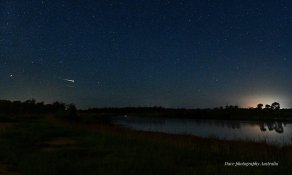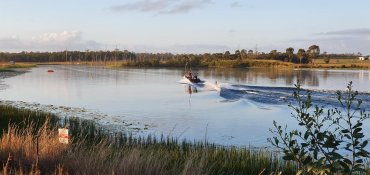Skigardeneer
New elf
- Joined
- Dec 20, 2022
- Messages
- 4
Hi Everyone!, Shaun from Bundaberg, this site looks to be an incredible place to learn about LED light displays, well done!…
I am looking to begin my lighting journey now for 2023 with a blank, watery canvas. My little guy is 2 years old and just loves the lights around town, so the lights are for him, the local community and and people who will be camping on site commencing later this year.
The display will be on our private competition waterski lake beside the Isis highway 20 minutes out of town… would be curious about any specific information/thoughts relating to displays in and around water and how to power it safely… maybe from batteries or generator?
I have been thinking about a Christmas tree located on, in or near the water.
A couple of years ago I scored a lightweight but sturdy stayed aluminium antenna assembly at the local metal recycler.
It has a 6m integrated ladder in the first stage and 2 additional 6m pipe stages that telescope up, might that be used for either a dumb tree or a mega tree?… Is it too big to be practical at the beginning at full height? Can anything be done to protect it from lightening?
We have a spot overlooking an area of water from 5m above, and it might also be fun to paddle through a display using Kayaks, SUP etc.?
In the future the lighting system may also see service in other configurations for night water ski event and other holidays throughout the year…
Photos below are of the lake on a starry night just begging for some lights of it’s own, and a daylight photo of the general area to left of the boat course where an on water display could go?
Looking forward to being part of your Christmas light community, Shaun.


I am looking to begin my lighting journey now for 2023 with a blank, watery canvas. My little guy is 2 years old and just loves the lights around town, so the lights are for him, the local community and and people who will be camping on site commencing later this year.
The display will be on our private competition waterski lake beside the Isis highway 20 minutes out of town… would be curious about any specific information/thoughts relating to displays in and around water and how to power it safely… maybe from batteries or generator?
I have been thinking about a Christmas tree located on, in or near the water.
A couple of years ago I scored a lightweight but sturdy stayed aluminium antenna assembly at the local metal recycler.
It has a 6m integrated ladder in the first stage and 2 additional 6m pipe stages that telescope up, might that be used for either a dumb tree or a mega tree?… Is it too big to be practical at the beginning at full height? Can anything be done to protect it from lightening?
We have a spot overlooking an area of water from 5m above, and it might also be fun to paddle through a display using Kayaks, SUP etc.?
In the future the lighting system may also see service in other configurations for night water ski event and other holidays throughout the year…
Photos below are of the lake on a starry night just begging for some lights of it’s own, and a daylight photo of the general area to left of the boat course where an on water display could go?
Looking forward to being part of your Christmas light community, Shaun.



